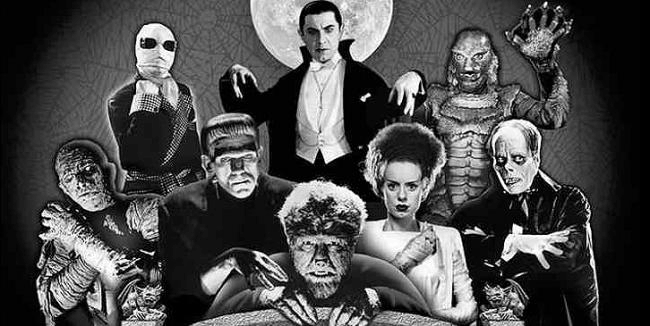

We all know, love, and have our favorite of the classic monsters from our childhood but, what was the original inspiration for these creepy creatures of the shadows? A new book being published called “Medusa’s Gaze and Vampire’s Bite: The Science of Monsters” delves into what fears and real dangers the people of the time were living with that would have created them. From disease to war, times have most certainly been tough in the past and everyone had plenty to worry about.
Reuters reports:
Nov 8 (Reuters) – The suave and sensitive Edward Cullen of “Twilight” may be the norm for vampires these days, but fictional monsters such as Dracula originally sprang from the fear of inexplicable diseases and the mysteries of death in the natural world.
So argues science journalist Matt Kaplan in “Medusa’s Gaze and Vampire’s Bite: The Science of Monsters,” an examination of monsters around the world and throughout history – the science behind their origins, and why they matter to us even now.
“When our kids ask for monster stories around the campfire, they are behaving in a way that is not dissimilar to lion cubs,” Kaplan said in an email.
“Lion cubs play fight so they can test out their skills in a safe place where nobody is going to get maimed or killed. Monster stories serve a similar purpose, they allow us to face our worst fears without the risks that are normally associated with them.”
Some are simple. The Kraken tales of mammoth monster squid, along with the Leviathan of the Bible, are most likely based upon the existence of real creatures such as whales.
The terrifying Medusa of Greek myths, with her hair made of snakes and a gaze that could turn things to stone, may have been distantly connected to the idea of fossils for ancient people, with the snakes in her hair an example of pure fear.
Though mentions of vampire-like creatures exist as early as ancient Greece, it took hundreds of years for tales of the creatures to gradually evolve into the haunting undead of more recent history.
Accounts of people found in their graves with blood on their lips and their stomachs seemingly full, as if they had just eaten, may be explained by simple decay, with gas buildup throughout the body sometimes pushing blood up from the lungs. Elongated canine teeth and fingernails was due to skin shrinking after death and pulling away, making both more prominent.
Later, greater awareness of contagious diseases such as influenza and tuberculosis – which could cause people who came in contact with the ill person to also sicken and die – further contributed to the myth. This was especially true due to incubation periods that weren’t understood at the time, making it unclear how the diseases were being spread.
“One death would follow another in a dominolike progression,” writes Kaplan. “In a morbid sense, these patients were literally killing their friends and relatives, but from their deathbeds rather than the hereafter.”
But vampires have now undergone a radical transformation, a process that began with the publication of Bram Stoker’s “Dracula” but has speeded up in recent years.
“If tuberculosis, influenza, rabies and bloated bodies are the human experiences from which Dracula came, how have we now ended up with the kind, honorable and handsome Edward Cullen?” Kaplan said.
Read more at reuters.com/article
